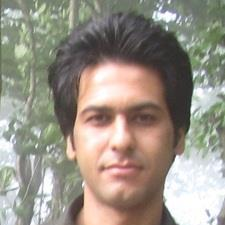
Seyed Mojtaba Marvasti-Zadeh
Work place: Temporal error concealment;Motion vector estimation;Boundary matching algorithm
E-mail: mojtaba.marvasti@stu.yazd.ac.ir
Website:
Research Interests: Image Processing, Image Manipulation, Image Compression, Computer systems and computational processes
Biography
Seyed Mojtaba Marvasti-Zadeh was born in Yazd, Iran, on July 15th 1986. He received the Associate’s degree in electronics from Technical Faculty of Imam Ali, Yazd, Iran, in 2008. Then, he received the B.Sc. degree in electrical engineering from the Department of Electrical and Electronic Engineering, Science and Arts University, Iran, in 2010. He was awarded as the best graduate student of Electrical and Electronic Departments, Technical Faculty of Imam Ali and Science and Arts University, in 2008 and 2010, respectively. He is now a graduate student of Communications field in the Department of Electrical and Computer Engineering, Yazd University. His research interests include image and video signal processing with a special focus on error concealment of video sequences in error-prone environments.
Author Articles
A Novel Boundary Matching Algorithm for Video Temporal Error Concealment
By Seyed Mojtaba Marvasti-Zadeh Hossein Ghanei-Yakhdan Shohreh Kasaei
DOI: https://doi.org/10.5815/ijigsp.2014.06.01, Pub. Date: 8 May 2014
With the fast growth of communication networks, the video data transmission from these networks is extremely vulnerable. Error concealment is a technique to estimate the damaged data by employing the correctly received data at the decoder. In this paper, an efficient boundary matching algorithm for estimating damaged motion vectors (MVs) is proposed. The proposed algorithm performs error concealment for each damaged macro block (MB) according to the list of identified priority of each frame. It then uses a classic boundary matching criterion or the proposed boundary matching criterion adaptively to identify matching distortion in each boundary of candidate MB. Finally, the candidate MV with minimum distortion is selected as an MV of damaged MB and the list of priorities is updated. Experimental results show that the proposed algorithm improves both objective and subjective qualities of reconstructed frames without any significant increase in computational cost. The PSNR for test sequences in some frames is increased about 4.7, 4.5, and 4.4 dB compared to the classic boundary matching, directional boundary matching, and directional temporal boundary matching algorithm, respectively.
[...] Read more.Other Articles
Subscribe to receive issue release notifications and newsletters from MECS Press journals